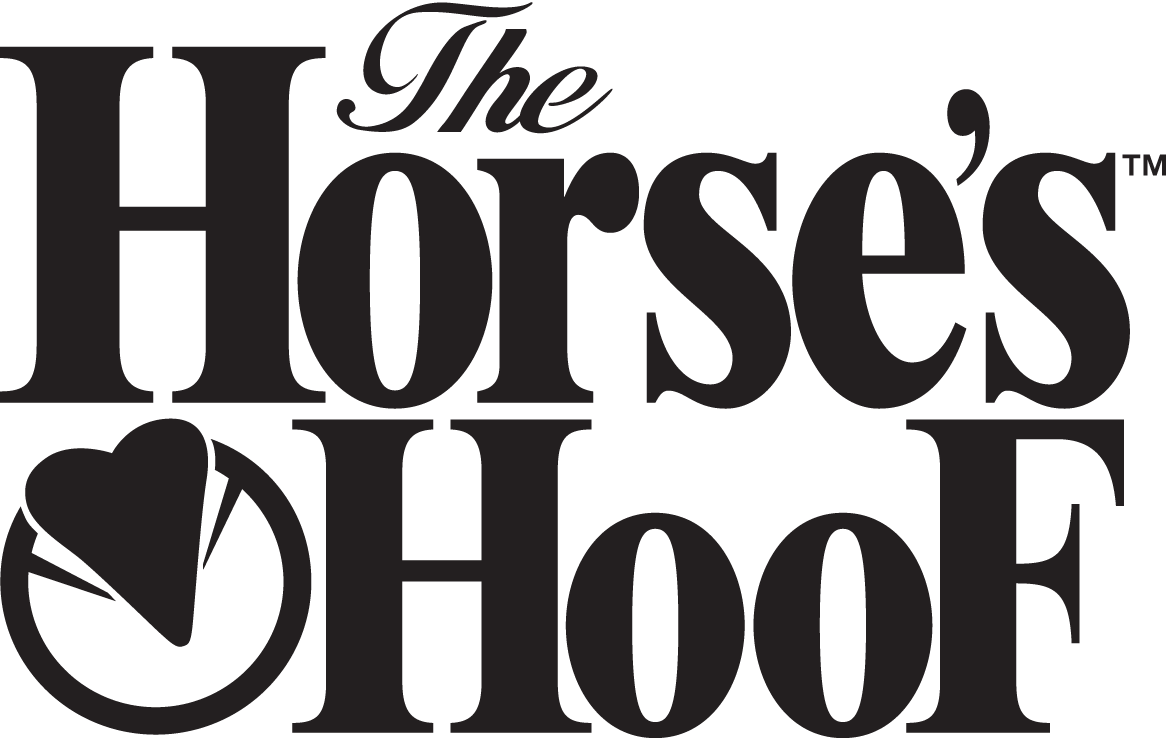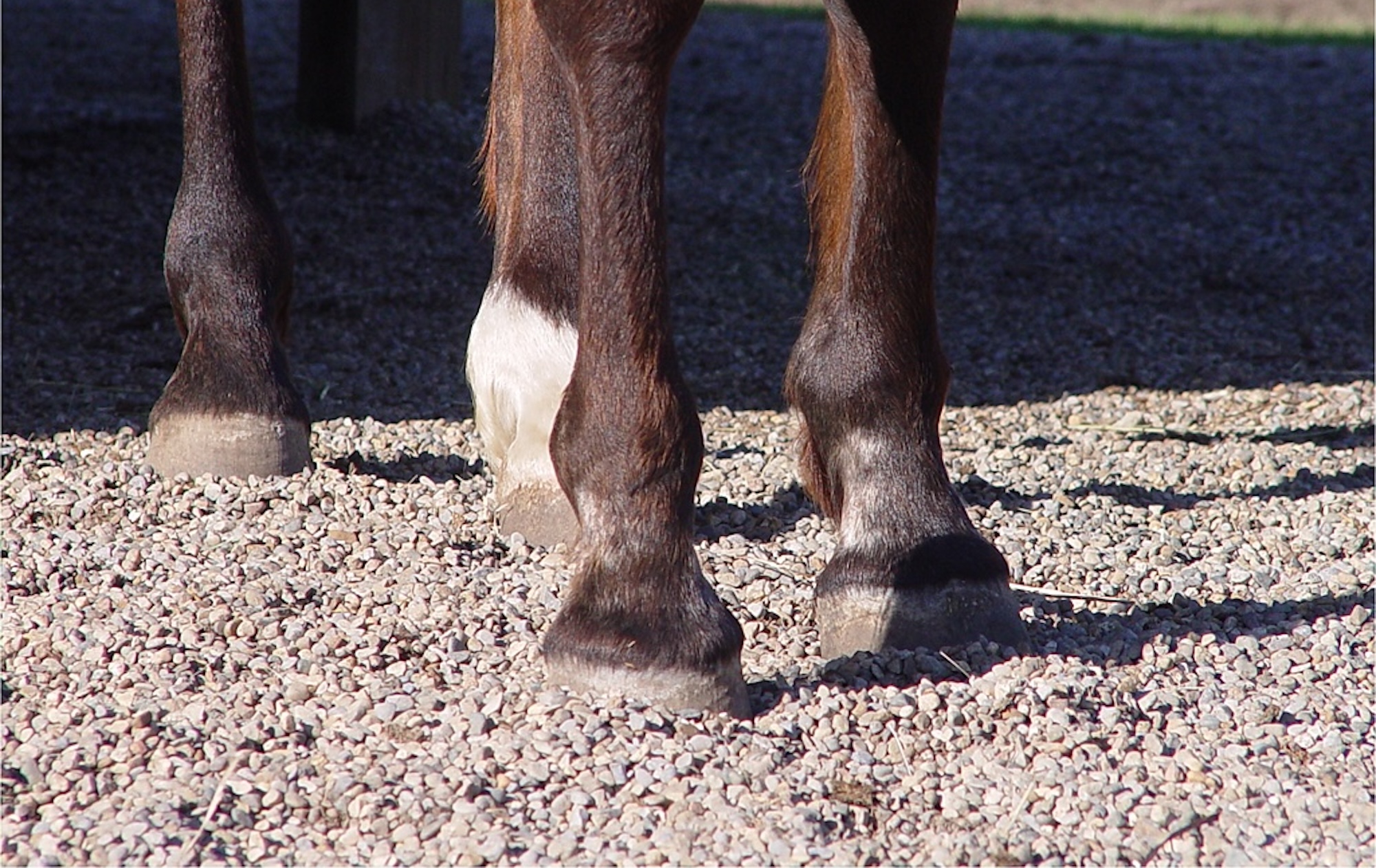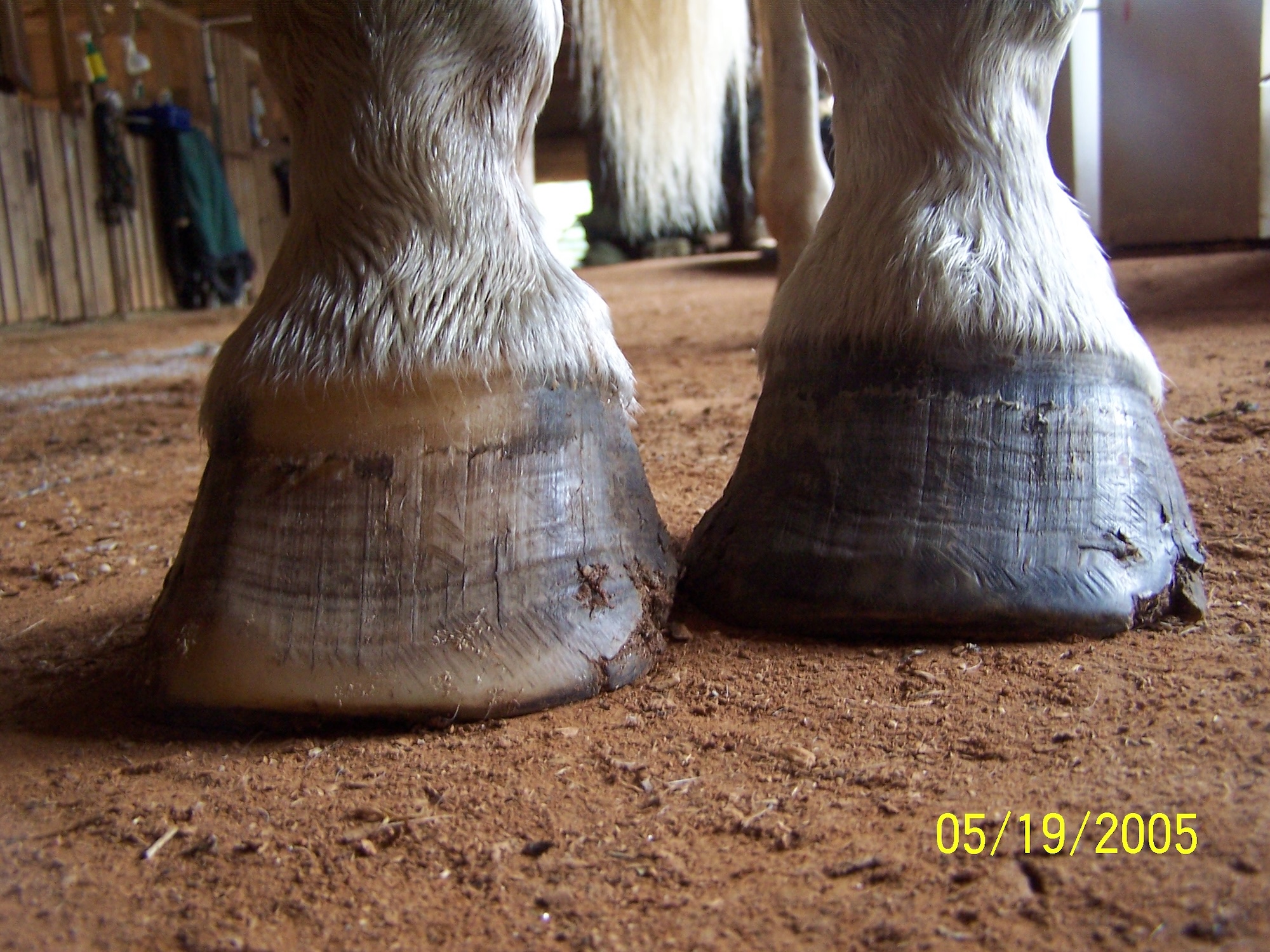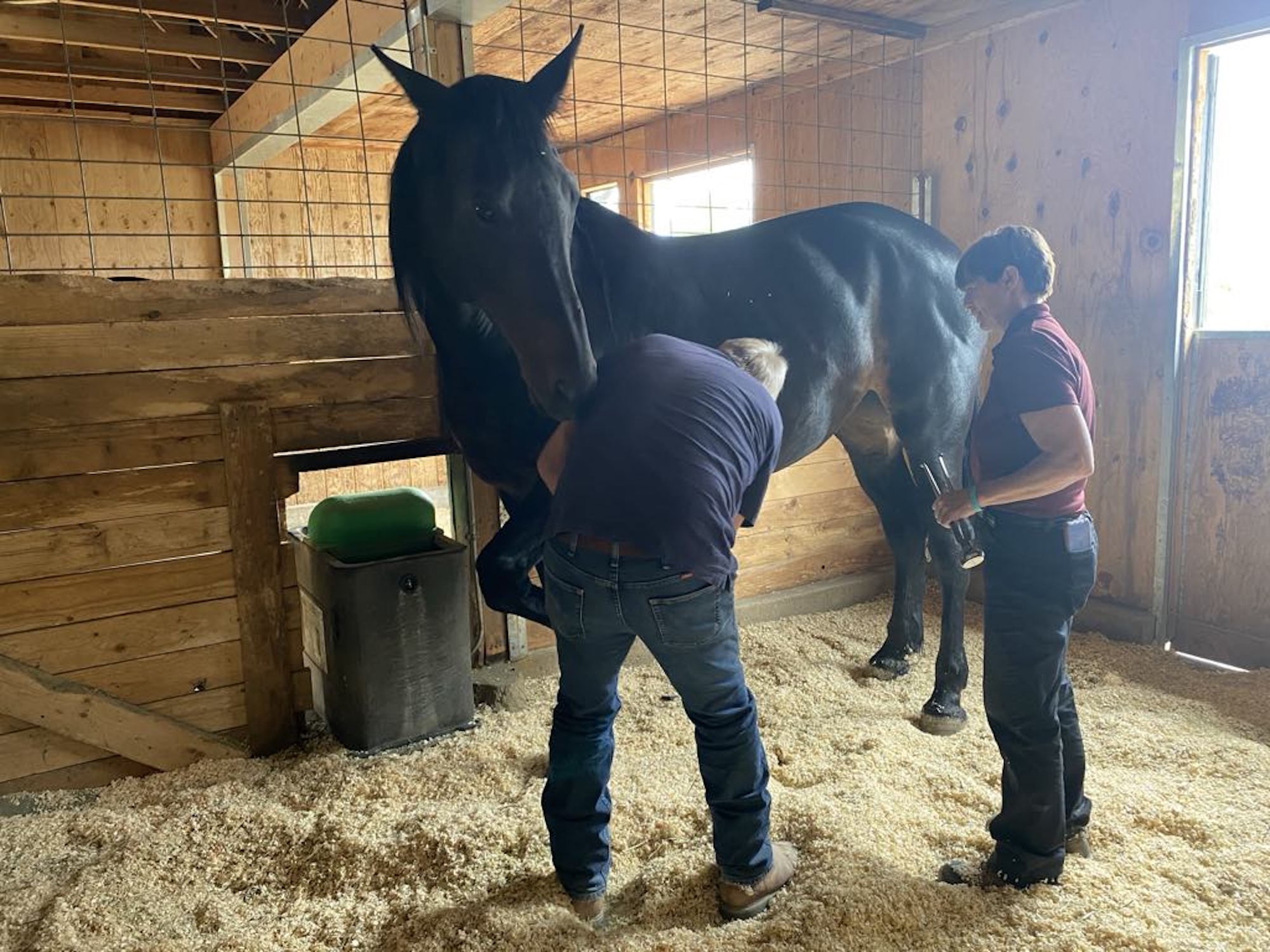We, as humans, use our hands and feet a lot as we move around and attempt to find our way through our world. Our Maker has endowed our fingers and toes with many specialized microstructures that permit us to detect and perceive the world that otherwise we would not be able to appreciate. These microstructures are called sensory receptors; we have them concentrated in our finger tips and toes and soles of our feet. They appear to be the “first line of detection” for us, as they can get close to our environment!
These sensory receptors enable us to feel the warmth and textured material of a soft sweater, or the warmth of a crackling fire during the cold winters. Those in our toes and soles of our feet allow us to sense the fine sand moving between our toes when we walk on the beach in the summertime, or to sense the soft and cushy slippers we slip on when we come home after a hard and long day’s work. We enjoy these sensations in our hands and feet, as they are comfortable to us, or permit us to become comfortable and relaxed. There are other sensations that protect us from harm, or tell us that something is not good—such as a slight pain in the hand or foot, or maybe even in the butt! (Note: the latter feelings are NOT the result of sensory receptors being activated by the sensory stimuli that we are discussing!)
Without these sensory receptors we would not be able to appreciate our world as we know it, with its many and various textured materials that we all enjoy so much and that make our environments exciting, fun and intriguing for us! The more we use our hands and toes, the more information we are able to obtain about the environment, and thus the more we are able to appreciate and learn about it.
These sensory receptors include a variety of receptors ranging from the proprioceptive receptor (Pacinian corpuscles), pressure and touch sensors, and movement sensors, to name a few. When we move our hands to grab the bucket in the morning, walk to the barn and feed our horses, many of these sensory receptors are activated in our toes and soles to help carry out the feeding chores. The Pacinian corpuscles are detectors of abrupt stimuli, such as when we move our feet as we walk to the barn with ground impact, as they inform our nervous systems that a new position has been achieved with each step, and that our reflexes and muscle activities may need to be adjusted, in order to support our weight and get ready for the next step. Simultaneously, the touch and pressure receptors are activated in our toes and sole, so we can feel and sense the ground surface and its texture as we walk, which can range from the crepitance of lightly fallen snow, to the frozen mud and manure piles, as we cross the pasture to edge closer to the barn.
Some of this information is consciously perceived, meaning we can actually feel it, while some is unconsciously perceived, meaning no matter how smart we are (or even think we are), we cannot feel it, but the nervous system is able to take that information and use it to help us move through the environment. During this trip to the barn, the lightly fallen snow provides a softer and more comfortable surface to walk on, while the frozen and hard wintery surfaces of mud piles and manure droppings are less comfortable for us to step on them. Interestingly, these two surfaces of snow and the hard frozen mud activate the same types of receptors, but yet the resultant sensations that we all feel are different to us when we walk on them, or our hands feel them! Why these sensations are different, we do not know; they just are.
These sensory receptors provide our nervous systems with a wealth of sensations and information in our hands and feet as (1) they provide us with many individual and complex sensations when a stimulus comes into contact with a specific receptor, or when many different stimuli activate many different receptors simultaneously, and (2) they allow us to begin to assess the degree(s) of comfort that these sensations are giving us, or that we are feeling and detecting. I think that everyone understands the first piece of information by the stimulus activating a specific sensory receptor for producing the specific sensations, such as light touch versus deep pressure versus a pin prick, to moving or stationary stimuli. The second idea of “comfort” may be a little more confusing, due in part to on-going research in the human field that is still trying to explore and answer this notion of what defines comfortable and uncomfortable sensations in terms of sensory physiology. At this point in time, nobody really seems to know!
All photos courtesy Dr. Robert Bowker
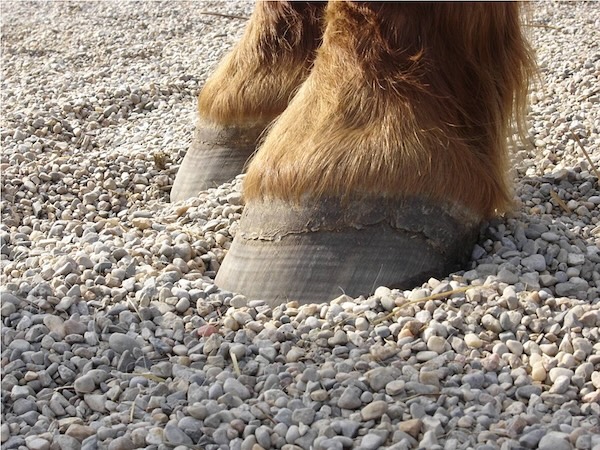
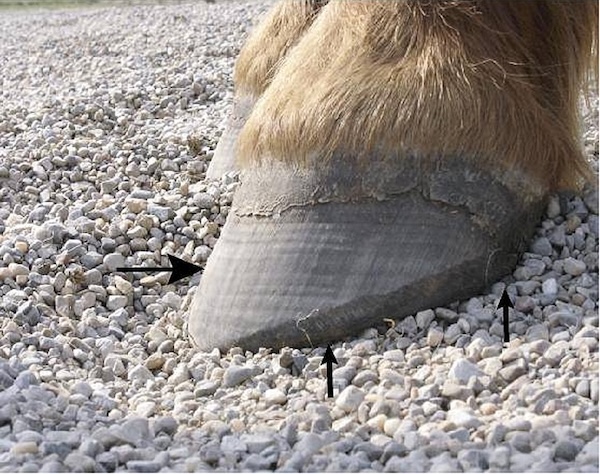
However, I do think that we all know when something is comfortable (versus not comfortable) as (1) we like the sensation the stimulus produces and (2) it appears to also have other far-reaching beneficial effects within our bodies, such as changing our basic physiology to become less stressed by lowering our heart rates, relaxing our neck and back muscles, etc. That is what our big cushy slippers start to do when we come home from work, and we kick off our working shoes—heels or bootsand we put them on as we start to relax, etc! The uncomfortable sensations, on the other hand, encountered by our hands and feet have the opposite effects of comfortable sensations, as we do not like them, and make repeated attempts to remove ourselves from that specific situation by shifting our position(s), or moving to another site; in other words, we attempt to get more comfortable. In addition, our basic physiologies of our bodies may become more stressed as it raises our heart rates, tenses our neck and back muscles, and perhaps even elevates our stress hormones! WHY does the activation of the same sensory receptors in one instance (soft cushy slippers) produce a comfortable sensation, while in another situation (stance on a hard wood floor in our bare feet) produce a less comfortable (more uncomfortable) sensation? This remains elusive.
Now what about the horse: “Can and does the horse perceive these same sensations in its feet?” and “Can the horse appreciate comfortable surfaces (as they do not have fingers and toes)?” Anyone who has been around a horse and seriously watched the horse behaviorally for at least a few minutes would answer in the affirmative for the first question—that the horse, by moving its feet, can perceive and appreciate many, if not most, of the stimuli in its environment. However, by more traditional and historic accounts of horse hoof health, the data and practices would suggest otherwise! Also, with regards to the notion that the horse can appreciate, and perhaps even prefer, certain “comfortable” surfaces over “uncomfortable” surfaces may be more difficult for people to grasp and understand for the moment, as often many people do not permit the horse to make such an “intellectual” decision! With this latter issue, we do believe that horses (1) appreciate comfortable ground surfaces to stand on, and (2) “like” and prefer these comfortable ground surfaces over those surfaces that are “uncomfortable” for them to stand on.
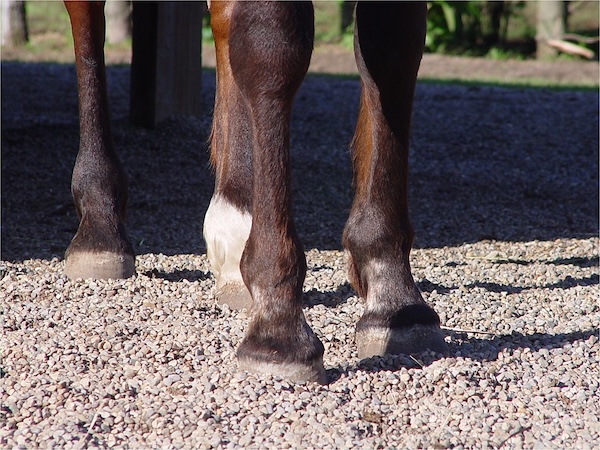
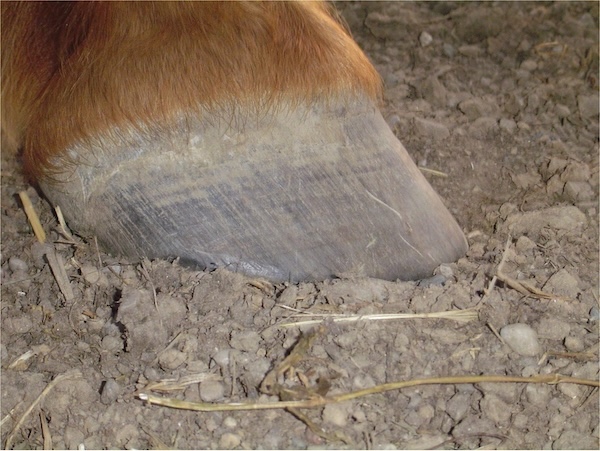
We have always suggested that the foot is a “neurosensory device” and the horse uses the foot to gain information about its environment, as to whether ground surfaces are comfortable or not. The foot has many similar neurophysiological features of our finger tips and toes! While some would say that I’m just biased in thinking in this manner, as the field of neuroscience is the area of my initial training, I would like to proceed to show and convince you that the horse’s frog, and indeed the entire foot, has a major function for detecting the many and various sensory stimuli within the environment (both external and internal), and may even affect the entire demeanor of the horse.
The sensory receptors in our fingers and toes and in the horse’s foot must elicit the appropriate reflex responses to the muscles and ligaments during stance and active movements, as well as protect the hand, toes, and horse’s foot from potentially harmful events. However, the horse’s foot is encased in a hardened keratinized shell, which may serve as some sort of “buffer” between the external environment and the internal world of the foot. There is one foot structure that may serve the horse’s purpose in being sensitive enough for detecting environmental stimuli, and in affecting other foot and body regions, and that structure is the frog.
The frog, as we all know, is the wedge shaped tissue covered by a softer keratin (a protein present in skin, nails and hooves) that is located on the solar surface of the foot and serves a biomechanical function. The size of the frog can vary considerably from the large firm structure having a shallow central sulcus that actively contacts the ground surface, to one that is severely atrophied and nonfunctional in not touching the ground, with a deepened groove of the central sulcus. The relatively large frog will have a greater surface area for picking up sensory information than one that is smaller, while the shallow central sulcus may allow the scent glands present in the frog to better secrete their “chemical messages” for other horses. Horses love to communicate with each other, similar to modern day version of “texting”! In addition, the internal central core of the frog varies in volume and tissue composition, with the “gooder” feet having a large and fibrocartilaginous central core, while in a smaller, non-weight bearing frog, a reduced to very little volume of the internal central core exists and is composed only of fibrous and elastic tissue in this modified subcutis tissue.
Now, as alluded to above, the frog and fingers and toes have many more things in common than not; so what does the frog have with regards to neurophysiological sensory receptors and structures? One that we have described previously is the Pacinian corpuscle, a relatively large sensory structure located on the caudal parts of the foot in the subcutaneous tissue of the heels and extending into the caudal parts of the frog, as well as in isolated structures in other areas. These receptors respond only to rapidly applied stimuli (1-2 times per second), such as during ground impact of the foot when the heel strikes the ground first during movements, and cease to respond when the foot comes to a stance or the same stimulus is repeatedly applied (i.e., you pick up the foot and hit the heels 4-5 times quickly with your hoof pick—the Pacinian corpuscles cease to be activated while touch receptors will fire with each contact of the hoof pick).
Structurally these “onionlike” types of receptors are fluid filled, and so when stimuli are rapidly applied, the fluid filled receptor (being non-compressible) transmits the pressure waves to the centrally located nerve fiber to create an action potential, while with the same stimulus applied slowly, no action potential is produced, as the fluid can be slowly moved between and around the layers without creating a nerve impulse, similar to a slow leak in a balloon. These generated action potentials are then quickly transmitted to the spinal cord to be inserted into the various reflexes, which aid in extending and flexing the forelimb muscles during running and walking behaviors, etc. These Pacinian corpuscles are pictured below.
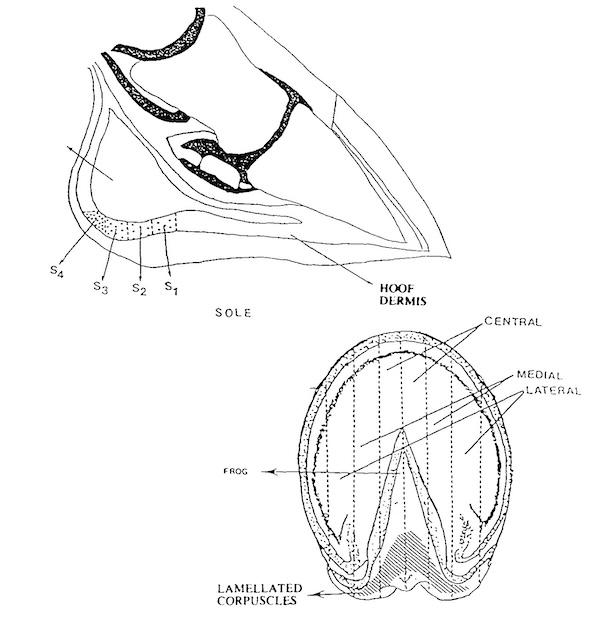
Top: Drawing showing sites of where Pacinian corpuscles (laminated corpuscles) are located in foot and frog. The letters S1-S4 just show where they are concentrated with more being at rear of foot.
Bottom: These are zones that were examined for these receptors.
The other sensory receptors that I want to mention are the touch receptors present in the frog, as these are crucial to changing the perfusion of the horse’s foot, and perhaps contributing to the horse being comfortable. These touch receptors are structurally similar to the touch receptors that we have in our finger tips and use for feeling our environment for detecting what kinds of stimuli are out there!! So, as they are present in the frog, we assume that similar sensory information is detected with the frog and conveys this information to the central nervous system of the horse, to permit the horse to know what is under its feet, as well as enter into various reflex pathways. This tidbit of information is exciting, from both a neurophysiologist’s and a behavioralist’s point of view, as these new findings in the frog (we have not published them as yet except here!!) can explain what we have been observing for the past few years in the horse’s behavior and in the improved blood perfusion of the horse’s foot when they stand on a conformable surface.
The same touch receptors contain and release the chemical neurotransmitter substance P from their nerve endings. Substance P is a chemical substance that allows nerve fibers to communicate with each other; in this case, the touch receptors are permitted to “talk” to the microvessels in the foot! So once the substance P is released from the touch receptors in the frog (and possibly in the sole corium), it then affects nearby, as well as distant, microvessels and promotes these small blood vessels to undergo a significant vasodilatation; in other words, the substance P permits all or many of the “swizzle-stick” microvessels in the foot to open up and allow greater blood flow through more of the foot tissues when they are standing on these conformable surfaces.
A conformable surface means the ground forms around all of the nooks and crannies on the bottom of the foot, such as pea rock or deep sand, in contrast to when standing a hard or firm ground (or non-conformable) surface, such as dried dirt, cement, or wooden or linoleum floors. When these horses stand on a conformable surface, the frog is engaged with the ground surface and activates these sensory receptors, to promote the increased foot perfusion. At the same time, the increased area of loading on the conformable surface decreases the stresses inside to foot, with these latter effects being perceived and influenced beyond the foot, including the upper leg, back, and neck.
We believe that these two events—(1) activation of touch receptors and substance P receptors, and (2) the increased perfusion of the foot—are two factors that contribute to the notion of comfort. The same two things happen in the horse when we use pressure mats for measuring the pressures and loading areas when they stand on conformable and non-conformable surfaces. These two observations are perhaps just two factors that contribute to our perception of comfort.
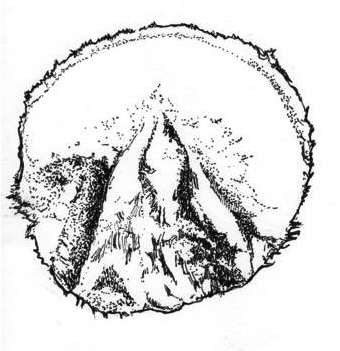
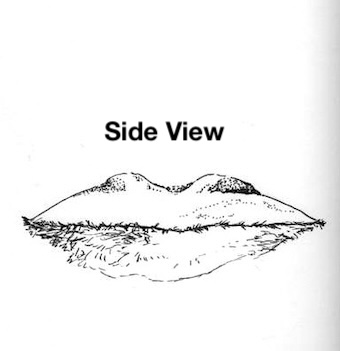
Drawing of dirt plug removed from foot and air dried! Note the shape of dirt plug, as that is what is being loaded when horse is on pastured surface in Michigan.
So to go back to our original question: Does the horse appreciate its environment and prefer comfortable surfaces? I believe that the answer is YES to both questions! When standing on pea rock and other conformable surfaces, the horse will stand with the toes buried with the load being preferentially placed caudally in the foot (greater loading of frog, bars, heels as opposed to toe), as one can dig out from under the front of the foot and place one’s hand under the toe. The horse will stand for 10-20 minutes without moving or shifting its weight, which we interpret that the horse is relatively comfortable; in contrast, when on a hard surface, they will shift their weight periodically—several times per minute to every few minutes. During this stance on conformable surfaces, the frog is actively engaged with the ground and the perfusion of the foot improves. (NOTE: Simultaneously with this position, the hoof wall becomes less of a loading structure, as we have believed that the wall should be loaded with only a small percentage of the load, i.e., 5- 15% when standing, if at all. In other words, the hoof wall should not be the primary loading structure! However, we can make it THE PRIMARY LOADING STRUCTURE BY HAVING THE WALL EXTEND WELL BEYOND THE SOLE SURFACE, OR BY PUTTING PERIPHERAL LOADING DEVICES ON THE FOOT!)
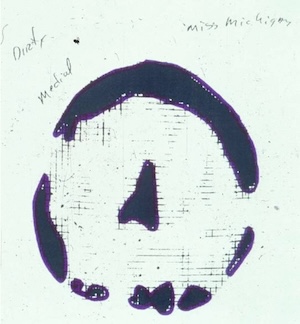
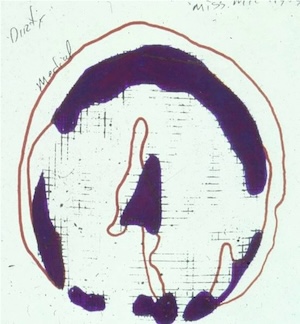
Two barefoot imprints of same foot, showing the foot imprint as horse came off an arena surface (left) without cleaning the foot (dark blue color); at right, the same foot a few seconds later, after cleaning the dirt from the foot and making an imprint of the foot. The first imprint was superimposed on the second imprint, but cleaned foot: note that the hoof wall (outlined in red) was the loading structure on the clean foot, and was outside the dirt plug foot (loading structure). On the left with the dirt plug still in, the wall does not make an imprint, as it is not being loaded.
On pasture, the solar surface is usually the main loading structure, as a dirt plug is positioned within the central portions of the foot (figure A). This foot-loading behavior can be seen as one examines the foot of a pastured horse (obviously common sense goes a long ways here, as if one is pastured in a paddock that is as dry and hard as cement, then there probably be little dirt plug, and the foot will be peripherally loaded). BUT with a dirt plug (figure A), the load is placed on the central parts of the foot (sole, bars, frog via the dirt plug); however, if one removes the dirt plug, and then places the same foot on the ground, it becomes a peripheral loading structure.
Another everyday example of the importance of the touch receptors in the frog and the notion of comfort is this past winter when the outside temperatures rose to nearly 60 degrees for a few days (note: we were all fooled in Michigan that spring was coming!), and then they plummeted to single digits. My ten horses were all uncomfortable when everything turned to ice and frozen ground, as they had lost their dirt plugs, and had no or little support for the solar surface of the foot (we trim so they load the solar surface of the foot with the dirt plug). However, after a second day, there was a light snow (one-half to one inch total snow fall), and then all of the horses were comfortable and running (trotting and galloping) around, as the snow covering the ground was just enough to activate more of the touch receptors on the frogs of their feet. So my interpretation is that when the touch receptors on the solar-frog surface were activated, the horse’s feet were comfortable, as they were running around as opposed to just standing or moving very slowly on the hard ice and frozen ground surface.
So as many already know with a barefooted horse, the environment that the horse is living and moving in must be addressed: if there are many acres of land or pastures of varied surfaces, the horses will usually seek out those surfaces where they will be comfortable (unless the “feeding zone” is in another place); while the smaller home pasture will require greater attention by the horse owner, to ensure that these sensory receptors can become activated to improve the physiology of the foot, as well as make the horse comfortable. These observations are no different than what we wish for when we walk on different ground surfaces—after all, we all want to be comfortable!
Readings:
Bowker, RM et al. Sensory receptors in the equine foot. Am. J. Vet. Res. 54:1840-1844, 1993.
Bowker, RM, Innervation of the equine foot: its importance to the horse and to the clinician. In: Equine Podiatry, A. Floyd and R. Mansmann (Eds), Saunders, pp. 74-89, 2007.
Vanwulfen, KK & Bowker,RM, Evaluation of tachykinins and their receptors to determine sensory innervation in the dorsal hoof wall and the insertion of the distal sesamoidean impar ligament and deep digital flexor tendon on the distal phalanx in healthy feet of horses. Am. J. Vet. Res. 63: 222-228, 2002.
About the author: Dr. Robert Bowker has spent the past decade and a half studying the function of the equine foot at Michigan State Univ., and is now working on his rehab center, Corona Vista Equine Center, in Michigan. He reports, “Ms. Tara Jackson is here from Australia now, and is helping immensely, as well as doing some research with us.”
by Robert M. Bowker VMD, PhD, published in The Horse’s Hoof Magazine, Issue 34, Spring 2009, originally titled, “Fingers, Frogs and Toes: Common Features!”
See the full content listing of all issues of The Horse’s Hoof Magazine! We also provide instructions on how to read the issues for free on Hoof Help Online.
For a detailed listing of all articles on The Horse’s Hoof website, please visit our Article Directory.
